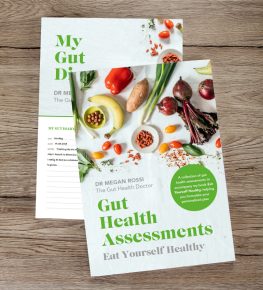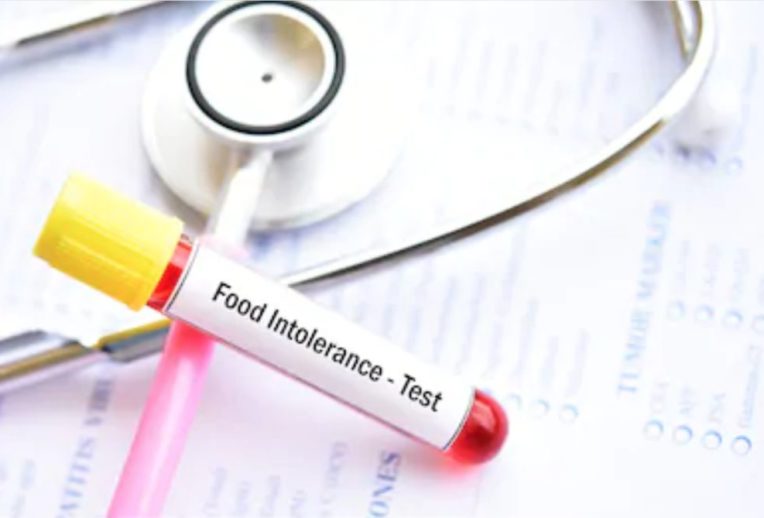There are two main types of food hypersensitivities, ‘food intolerances’ and ‘food allergies’.
Although we’re going to focus on food intolerances, it’s worth knowing a little more about allergies, because the two conditions are often confused with each other.
Food allergies
The symptoms associated with a food allergy are typically more severe than those of food intolerances and can include difficulty breathing, racing heart rate, skin rashes as well as digestive issues.
There are two main groups of food allergies:
-
Those with a rapid onset (minutes to 1-2 hours), known as ‘IgE-mediated’ food allergies, which can be life-threatening
-
Those with a delayed onset (several hours to 48 hours), known as ‘non-IgE-mediated’ food allergies, which are not life-threatening, but can be debilitating for some.
The IgE-mediated food allergies are easier to diagnose with skin prick tests or specific IgE blood tests that can help confirm a diagnosis. Things get a little more tricky with the delayed non-IgE-mediated food allergies, which can’t be picked up by tests. Instead, excluding the suspected culprit followed by a food challenge (under the guidance of a specialist) is considered the gold standard for diagnosis.
Food allergies are rare, affecting around 1-2% of adults and should only be diagnosed by a suitably qualified clinician. The most common foods allergens are dairy, egg, wheat, soya, nuts/seeds and fish. In adults the most common form of food allergy is pollen food syndrome.
Food intolerances
When it comes to diagnosing food intolerances, unfortunately, scientists are yet to develop a suitable test (with lactose intolerance being the exception). We only have tests so far that can detect IgE food allergies.
Despite this, a market of invalid tests has emerged selling nothing but pseudoscience, lacking both scientific evidence and clinical relevance. So guys, despite the convincing marketing claims you may come across, it’s not worth your time, money or sanity.
Some of the common invalid tests to watch out for include IgG tests, hair analysis, eye analysis (iridology) and muscle analysis (kinesiology). Many of these tests attach themselves to scientific concepts that sound convincing to a non-scientific audience.
Take for instance the IgG tests
This test involves exposing a sample of your blood to a wide range of different foods and the resulting antibody (IgG) measured, which the test claims is a marker of “intolerance”. Sounds pretty legit right? The thing is, unlike IgE (remember they are typically diagnostic of IgE-mediated allergies), most of us will actually develop IgG antibodies to food during our lifetime, despite not getting symptoms. This is because IgG is an indicator of repeated exposure, not clinical symptoms, explains expert immunologist Dr Macciochi.
What about breath tests?
These are backed by a sound scientific rationale and are often used to guide a diagnosis of lactose and small intestinal bacterial overgrowth (SIBO). However, the results need to be interpreted with caution as they don’t always accurately predict symptoms. This means the test may be positive, but you may not have symptoms, in which case there is no need to intervene.
I know reading this can be rather disheartening for those who may have paid for and changed their diets based on such tests. But many people I see, afraid to eat more than a select group of foods, find that this news can be truly liberating, and has allowed them to gain back the confidence to nourish their depleted bodies with a wide range of nutritious foods.
What if you’ve had the tests, restricted your diet and felt better?
This is typically a chance finding, let me explain why. All the tests I’ve seen (and I’ve seen a lot) cast a wide “net” and are not personalised to your specific intolerance, meaning they simply exclude many of the common food culprits. As a result, not only are you at risk of nutrition inadequacies but these tests encourage you to restrict foods that you may actually be able to tolerate.
So how do we diagnose food intolerances?
Dietitians follow a systematic process that I call the 3R process: Record, Restrict and Reintroduce. I have a whole chapter in my book, Eat Yourself Healthy & Love Your Gut, to help cut through the confusion by helping to safely guide you through the process of determining whether you have a food intolerance to some of the major suspects including lactose, gluten and wheat, what might be causing your symptoms just like I would at The Gut Health Clinic.














